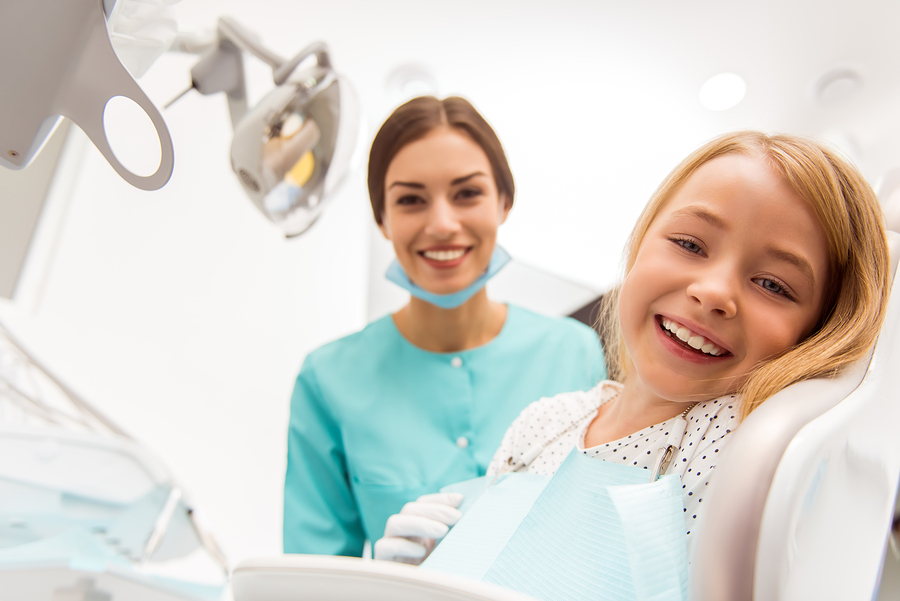We all know that good dental hygiene is important, but it is even more important to start these good habits early on in life. You can help the health of your children’s teeth by teaching them, not only to start these habits early, but to start them the right way to positively enforce them for life. It is never too early to encourage health dental care for kids!
As soon as your child’s first tooth grows in, there is a risk for decay. Tooth decay in children, known as childhood caries, is the most prevalent chronic disease in children, according to the American Academy of Pediatrics. In a worst-case scenario, severe tooth decay can result in the loss of a tooth. However, the best thing about this is that it is completely preventable. All you need to do is follow a few important guidelines to keep your child’s teeth as healthy as possible.
First Tooth
Between 6 and 9 months of age, your child should have their first tooth. By age 3, they should have all 20 of their primary teeth. Healthy teeth look naturally white, and healthy gums should be smooth and pink. You should make an appointment with your dentist if your child’s teeth look stained or spotty. You should also make an appointment with your dentist about 6 months after the first tooth appears.
How to Clean Primary Teeth
Starting from birth, you should be wiping your child’s gums with a baby washcloth or gauze, continuing until they are 12 months. When the first tooth comes in, use a baby tooth brush and water to clean its surface. Clean your baby’s teeth after breakfast and before bedtime.
From age 12-24 months, your dental routine will change. Now, you can use children’s toothpaste on the child-size toothbrush to clean your children’s teeth. Use a pea sized amount of toothpaste and brush twice a day. Unless otherwise specified by your dentist, avoid using fluoridated toothpaste. It isn’t safe to use on your child until they can safely spit. You should also pay attention to the fluoride in your tap water. If your city does not add fluoride to the water supply, then your dentist may recommend your child take a supplement.
It is very important to use the right technique for brushing and flossing your teeth. Therefore, you should follow these guidelines:
• Brush the teeth at a 45-degree angle to the gums.
• Gently move the toothbrush back and forth.
• Make sure to brush all surfaces of the teeth, outer, inner and chewing.
• Also, remember to brush your child’s tongue to remove bacteria.
• Start flossing when your child has 2 teeth grown in that are touching. This should happen around 2-2 ½ years old.
• To floss, cut about 18 inches of floss, wrap one end around your middle finger and the rest around your other middle finger. Holding the floss tightly between your thumbs and pointer fingers, gently insert it in-between the teeth. Then, bend the floss so it makes a C shape, and move the floss up and down while pressing it against the teeth. Make sure to floss all the teeth, and don’t forget about the back teeth.
• When teaching kids how to floss by themselves, a floss holder may make it easier for them.
With these tips and tricks in mind, it is easy to give your child’s dental hygiene a good foundation and start. Teaching them at a young age how to take care of their teeth will definitely pay off in the long run.
Get the dental expertise and dental care for kids your child needs from Glendora Family Dentistry. Sachin P Desai, D.D.S. and staff can help to provide the expert care you need to transform and maintain a radiant, healthy smile.







